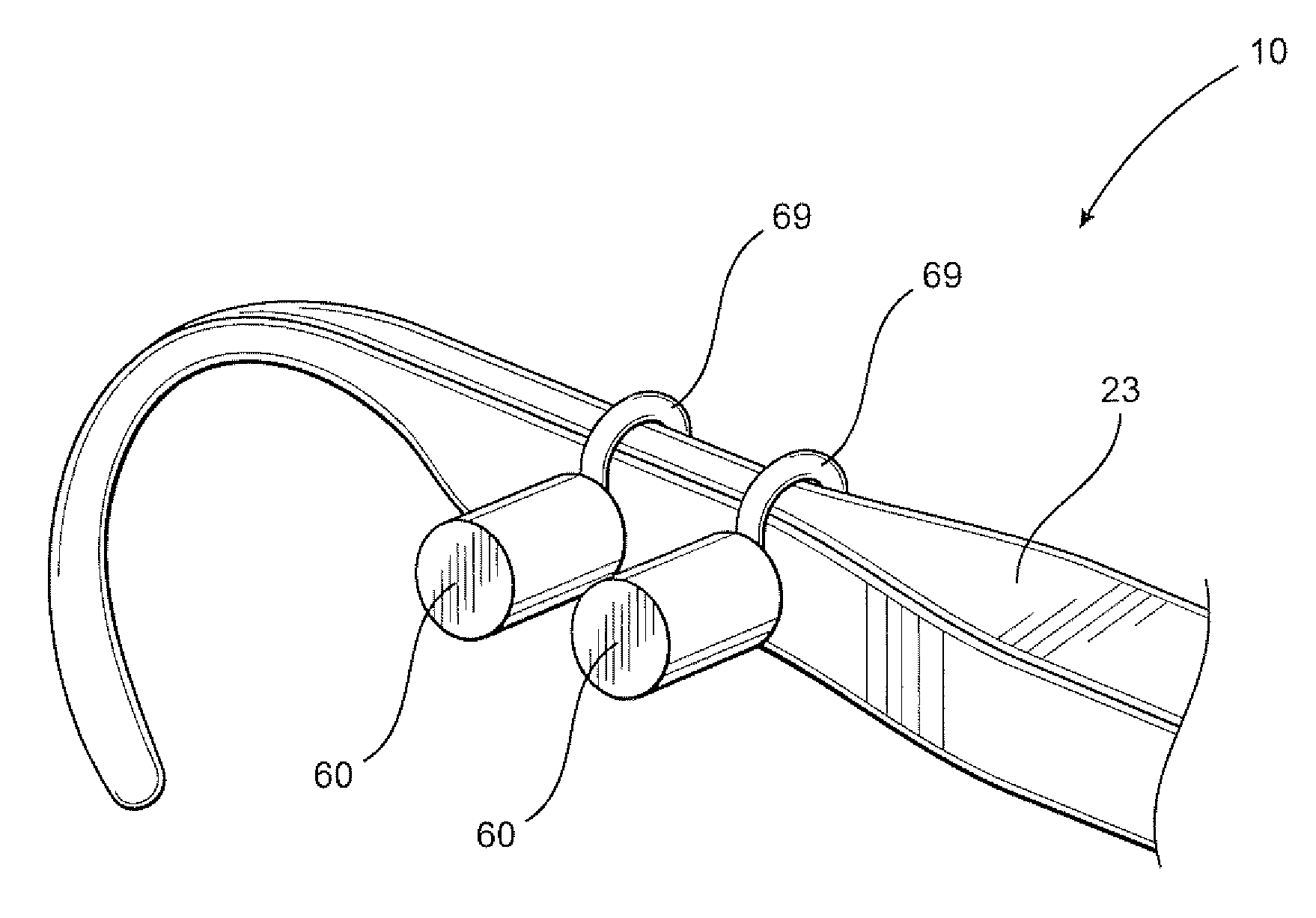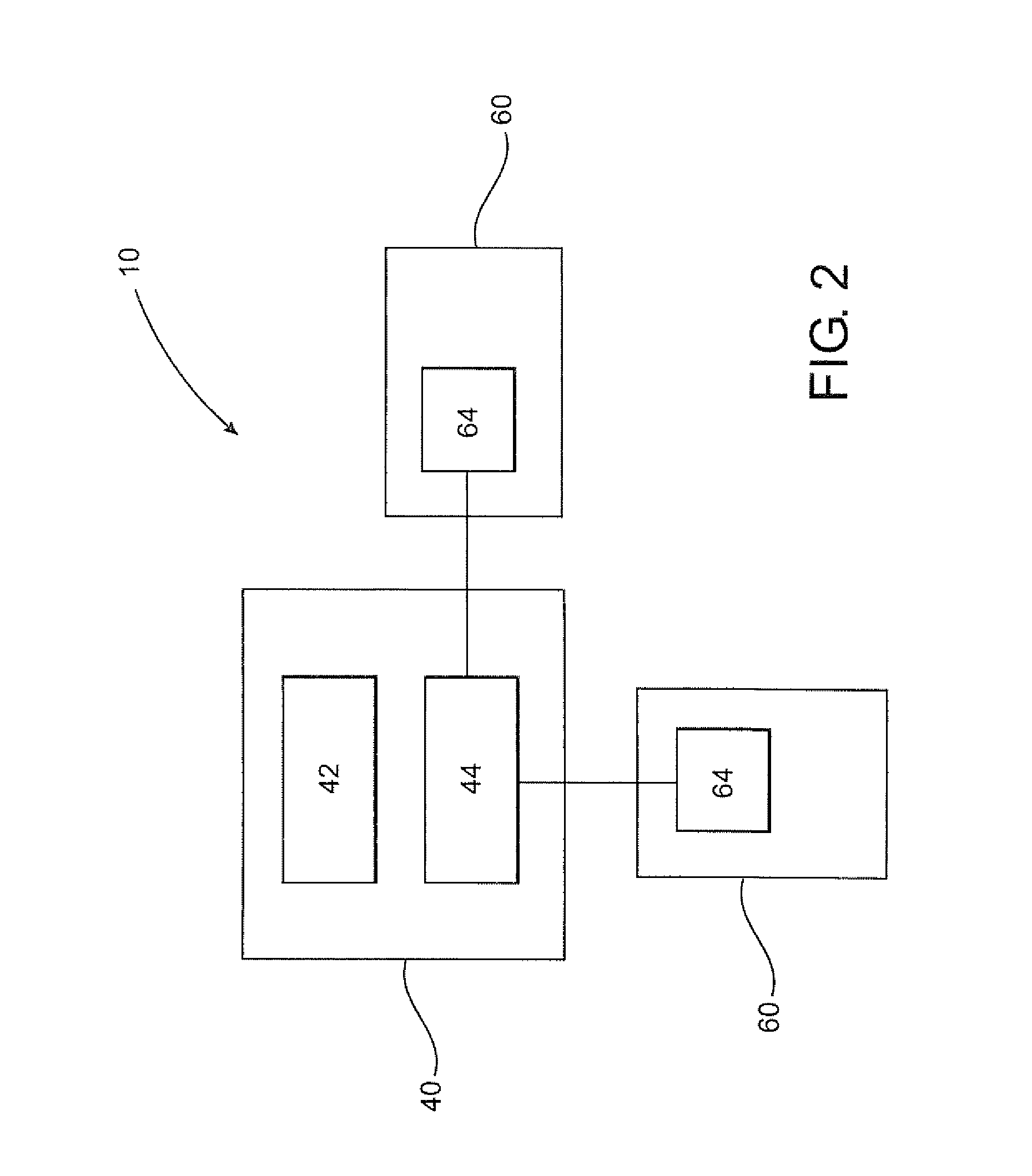Communication eyewear assembly
a technology of eyewear and communication, applied in the direction of instruments, spectacles/goggles, transducer details, etc., can solve the problems of inconvenient comfort, physical connection of speakers or earphones, etc., and inability to address many significant challenges, so as to facilitate such communication and enhance incoming and/or outgoing audio signals.
- Summary
- Abstract
- Description
- Claims
- Application Information
AI Technical Summary
Benefits of technology
Problems solved by technology
Method used
Image
Examples
Embodiment Construction
[0034]As shown throughout the accompanying figures, the present invention is directed towards a communication eyewear assembly generally indicated as 10.
[0035]The communication eyewear assembly 10 is structured to be worn on a person's head so as to protect the person's eyes and also to permit hands-free wireless multimedia communication. The communication eyewear assembly 10 is additionally structured to facilitate such communication in a noisy environment, such as that of a loud, industrial environment, or that found in a variety of other situations, such as, but not limited to, military operations, fire and rescue operations, public safety operations, sports activities, etc. In particular, the assembly 10 is structured to enhance incoming and / or outgoing audio signals to overcome the inherent difficulties presented by the ambient noise of such environments. Moreover, the assembly 10 is structured to permit the wearer to hear others speaking directly to the wearer without having t...
PUM
 Login to View More
Login to View More Abstract
Description
Claims
Application Information
 Login to View More
Login to View More - R&D
- Intellectual Property
- Life Sciences
- Materials
- Tech Scout
- Unparalleled Data Quality
- Higher Quality Content
- 60% Fewer Hallucinations
Browse by: Latest US Patents, China's latest patents, Technical Efficacy Thesaurus, Application Domain, Technology Topic, Popular Technical Reports.
© 2025 PatSnap. All rights reserved.Legal|Privacy policy|Modern Slavery Act Transparency Statement|Sitemap|About US| Contact US: help@patsnap.com



